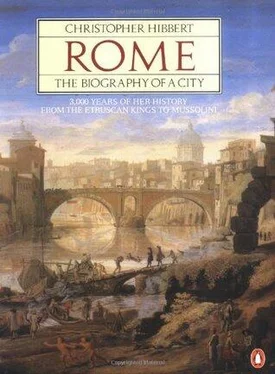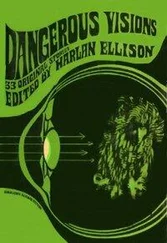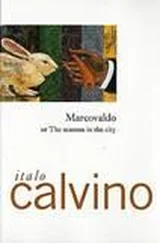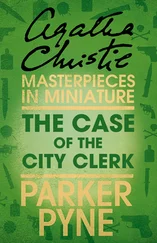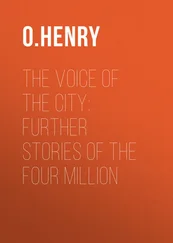Christopher Hibbert - Rome. The Biography of the City
Здесь есть возможность читать онлайн «Christopher Hibbert - Rome. The Biography of the City» весь текст электронной книги совершенно бесплатно (целиком полную версию без сокращений). В некоторых случаях можно слушать аудио, скачать через торрент в формате fb2 и присутствует краткое содержание. Жанр: Культурология, Искусство и Дизайн, на английском языке. Описание произведения, (предисловие) а так же отзывы посетителей доступны на портале библиотеки ЛибКат.
- Название:Rome. The Biography of the City
- Автор:
- Жанр:
- Год:неизвестен
- ISBN:нет данных
- Рейтинг книги:3 / 5. Голосов: 1
-
Избранное:Добавить в избранное
- Отзывы:
-
Ваша оценка:
- 60
- 1
- 2
- 3
- 4
- 5
Rome. The Biography of the City: краткое содержание, описание и аннотация
Предлагаем к чтению аннотацию, описание, краткое содержание или предисловие (зависит от того, что написал сам автор книги «Rome. The Biography of the City»). Если вы не нашли необходимую информацию о книге — напишите в комментариях, мы постараемся отыскать её.
Rome. The Biography of the City — читать онлайн бесплатно полную книгу (весь текст) целиком
Ниже представлен текст книги, разбитый по страницам. Система сохранения места последней прочитанной страницы, позволяет с удобством читать онлайн бесплатно книгу «Rome. The Biography of the City», без необходимости каждый раз заново искать на чём Вы остановились. Поставьте закладку, и сможете в любой момент перейти на страницу, на которой закончили чтение.
Интервал:
Закладка:
2. Built in 1479–83 near the Ponte Umberto by Jacopo di Pietrasanta for the rich French Cardinal Guillaume d'Estouteville, the church of S. AGOSTINO was constructed of travertine plundered from the COLOSSEUM. Its fine flight of steps flanked by a balustrade and simple façade are among the earliest examples of Renaissance art in Rome. The interior was redecorated in the eighteenth century by Vanvitelli. The church became a favourite place of worship of many of the intellectuals and humanists of the Roman Renaissance and, during their moments of repentance, of their courtesans. Cesare Borgia's mistress, Fiametta, had her own chapel here; and several other fashionable prostitutes were buried here, despite the regulation that required their interment beside the Muro Torto. In the second chapel on the left is a beautiful statuary group of St Anne with the Virgin and Child by Andrea Sansovino. Goritz commissioned the fresco of the Prophet Isaiah by Raphael on the third pilaster on the left of the nave. The famous Madonna and Child, whose foot has been worn smooth by the touch of thousands of mothers, brides and pregnant women throughout the centuries, is by Jacopo Sansovino (1521). In the first chapel on the left is a remarkable painting by Caravaggio (1604) of the Madonna of the Pilgrims.
3. The central BRONZE DOORS OF ST PETER'S were commissioned by Pope Eugenius IV (1431–47) and completed by Filarete after twelve years of work in 1445. The reliefs on the front, above and below the figures of Saints Peter and Paul, represent scenes from the life of Pope Eugenius including the Council of Florence over which he presided in 1439. On the back of the doors are representations of Filarete and his assistants dancing about happily with tools in their hands beneath an inscription in execrable dog Latin which seems to suggest that, although others got the money for the work, Filarete and his men had the pleasure of executing it. The modern doors to the left of Filarete's are by Giacomo Manzù who, on the back, has provided a relief of the Vatican Second Ecumenical Council showing Pope John XXIII talking to an African cardinal, an allusion to Filarete's depiction of the Ethiopian monks who attended the Council of Florence and afterwards visited Rome. The door on the extreme right is the Holy Door which is opened only during a Holy Year when the Pope knocks on it with a silver hammer.
4. At the foot of the north-west slope of the Palatine hill, in the Via S. Teodoro which leads from the CIRCUS MAXIMUS to the FORUM, stands the ancient circular church of S. TEODORO which was built at the end of the sixth century as one of the diaconiae . It was restored a number of times, notably by Pope Clement XI in 1705. A singular Good Friday ceremony is organized here by the Confraternity of the Sacconi Rossi, the members of which appear in their sack-like garb with pointed hoods.
5. The church of SS. CELSO E GIULIANO was consecrated by Pope Celestine I in 432 and wholly rebuilt in 1733–5 by the Roman architect, Carlo de Dominicis.
6. Theodosius was the general who put an end to the Gothic invasion of the Eastern Empire after the battle of Adrianople in 379. He became Emperor of the East that year and sustained the two young half-brothers who inherited the Western Empire – Gratian, aged seventeen, and Valentinian II, aged four. Magnus Maximus tried to usurp the Western Empire and, having taken over the northern provinces in 383, attempted the invasion of Italy in 387. He was defeated by Theodosius, who restored Valentinian II in 388. The ARCH OF GRATIAN, VALENTINIAN AND THEODOSIUS was erected to commemorate this victory.
7. A papal library had existed in the LATERAN PALACE, but the real founder of the present immense VATICAN LIBRARY was Pope Nicholas V, who increased the collection of books from 340 when he became pope in 1447 to 1,200 when he died in 1455. The library was expanded by Sixtus IV (1471–84) to 3,650 volumes and, after the loss of four hundred during the Sack of Rome, was further enormously increased throughout the sixteenth and seventeenth centuries by the accession of important bequests. By the end of the sixteenth century it had become impossible to house all the volumes, so Pope Sixtus V ordered the construction by Domenico Fontana of the impressive library building which is in use today. This is divided into halls and galleries decorated by various artists working for different popes. The Salone Sistina (1587–9) was built for Sixtus V, the Sala Paolina (1611) for Paul V, the Galleria Urbana for Urban VIII between 1623 and 1644, the Sala Alessandrina (1690) for Alexander VIII, the Galleria Clementina (1730) for Clement XII. The library and archives of the Vatican were opened to the public in 1881. The modernization of the library and the creation of facilities for research by scholars was undertaken in the pontificate of Pius XI (1922–39). Among the most interesting manuscripts to be seen in the collection are the fourth-century Bible ( Codex Vaticanus ); three copies of Virgil's works from the fourth and fifth centuries; Henry VIII's petition for the dissolution of his marriage to Catherine of Aragon; autograph poems by Petrarch and letters of St Thomas Aquinas, Martin Luther, Michelangelo and Raphael.
8. RENAISSANCE AND DECADENCE
1. The BASILICA OF S. MARCO is one of the oldest titular churches in Rome, a titular church being one of the twenty-five Roman churches, administered by priests, whose origins date from early Christian times. From the fourth century these churches were associated with cardinal priests who took their titles from them. The Basilica of S. Marco was founded by Pope Mark in 336 and dedicated to the Evangelist. Pope Hadrian I restored the church in 792 and it was almost entirely rebuilt by Pope Gregory IV in 833. The beautiful mosaic in the apse belongs to this period. It depicts Christ the Redeemer with the donor, Pope Gregory, being introduced to Christ by St Mark. In the sixteenth century the church was again rebuilt by the Venetian Cardinal Pietro Barbo who was cardinal of S. Marco before becoming Pope Paul II (1464–71). It is this church which we see today. It became the church of the Venetians. The magnificent gilded ceiling (1466–8) by Giovanninno and Mario de' Dolci and the grand portico and façade by Giuliano da Mariano and Leon Battista Alberti are among the finest works of the early Renaissance. They were made for Cardinal Barbo. Much of the interior decoration is a Baroque restoration carried out between 1740 and 1750 by Filippo Barigioni for Cardinal Angelo Querini.
2. Built in 1455–68 on the west side of the Piazza di San Marco by Cardinal Pietro Barbo, the PALAZ-ZET VENEZIA was originally intended for the reception of ambassadors and other important guests. It was demolished shortly before 1911 to open up the view of the VICTOR EMMANUEL II MONUMENT, and rebuilt on its present site on the west side of the piazza. The huge PALAZZO VENEZIA which is attributed to Leon Battista Alberti, was begun by Cardinal Pietro Barbo in 1455 and completed in 1467 by his nephew, Marco Barbo, who became titular Cardinal of S. Marco. It was the first great non-ecclesiastical building of the Renaissance to be erected in Rome. The Palazzo was retained as a papal residence until 1564 when it was handed over by the Church to the Republic of Venice for the use of the Venetian ambassadors in Rome and for the titular cardinals of S. Marco who were always Venetian. In 1797 the palace became the property of the Austrian Empire by the Treaty of Campo Formio (by which Napoleon granted Venice and her possessions to Austria in exchange for imperial territories). The Italian government claimed it in 1916 after the defeat of Austria by the Allies. Mussolini used it as his official headquarters. The palace contains a permanent museum and is now used for temporary exhibitions.
Читать дальшеИнтервал:
Закладка:
Похожие книги на «Rome. The Biography of the City»
Представляем Вашему вниманию похожие книги на «Rome. The Biography of the City» списком для выбора. Мы отобрали схожую по названию и смыслу литературу в надежде предоставить читателям больше вариантов отыскать новые, интересные, ещё непрочитанные произведения.
Обсуждение, отзывы о книге «Rome. The Biography of the City» и просто собственные мнения читателей. Оставьте ваши комментарии, напишите, что Вы думаете о произведении, его смысле или главных героях. Укажите что конкретно понравилось, а что нет, и почему Вы так считаете.
